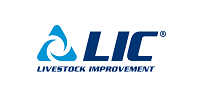- Home
- Knowledge library
- Forage for Knowledge
Forage for Knowledge
Make the most of your farm's potential with the latest regional grass growth and quality data and analysis, updates and resources.
Stay updated with the latest advice to make informed decisions, whether it's about adding an extra paddock for silage and assessing its impact on demand or ensuring that the growth rate aligns with your requirements.
Utilise the grass growth wedge to gauge potential surpluses or deficits and adjust your strategies accordingly.
Access the Forage For Knowledge database and resources to effectively manage risks and enhance your decision-making process.
Latest grass growth data
Use the interactive dashboard to view the latest regional grass growth and quality data.
Grass growth commentary and advice
Pasture to Profit consultant Piers Badnell will provide comments (usually, every two weeks) throughout the main grass growing season. Read the latest below.
10 May 2024
Starting with the temperature update, the cold winds we experienced seem to have subsided or slowed down.
Consequently, there's been a noticeable increase in growth, with the average grass growth is now at 54 kg DM, up from 40 kg DM two weeks ago.
However, it's important to note that averages can be deceiving; the range spans from 9 to 87 kg DM. This growth is influenced by both temperature and average ground cover.
Lower ground cover, typical for this time of year (below 2000 kg DM), results in slower growth. Temperature affects leaf appearance rate and size, so lower temperatures mean slower growth.
Despite the improvement, growth is still lagging behind the average from 2017–2022 by about 5–10 units.
According to BBC weather, temperatures are nationally higher compared to previous weeks, with a trend towards warmer weather for the month. Consequently, we should anticipate a significant growth spurt this week.
Regarding surplus management, some farms with heavy soils are still unable to clear surplus due to soil conditions.
It's important to wait for suitable ground conditions to avoid damaging soil structure. Even if it means opting for bales instead of full precision chopping, it's essential to be patient and selective.
Recent quality analyses have shown promising results, with energy levels averaging at 12.4 MJ ME last week.
Crude protein levels, however, were slightly lower at 18.8% where you would expect (20–30%), this is likely due to limited fertiliser application due to wet conditions. While this may seem low, it's not limiting, as cows don't require more than 16-17% crude protein in their diets.
In fact, grazing on such grass could be beneficial, as evidenced by a client's experience of increased milk yield after transitioning to a full grass diet.
With improved weather and ground conditions, now is the time to maximise grass intake and consider cutting surplus paddocks.
Focus on those with poor residuals from spring, mowing as low as possible without damaging equipment or contaminating the grass with soil. For those able, resetting the grazing platform now will yield dividends throughout the season.
What are your silage stocks and potential stocks like? Among clients there is a big variation and with a climate that is changing and producing more extremes of weather patterns what do you need in reserve for weather events?
Teagasc suggests 0.4 t DM per cow for spring-calving animals. Your level of reserves should align with your production system and risk tolerance.
My view 0.4 t is the starting point below this and very dry periods are expensive and stressful above this is your situation, production system and view on risk.
Regarding damaged paddocks, consider minor interventions such as aerating to improve soil tilth and overseeding to pre-empt weed ingress.
I would think possibly a tetraploid something with big seed and bold growth to get ahead of weeds but talk to your seedsman.
Monitor growth on poached paddocks is it keeping up with other paddocks and if it needs sward lifting this is probably an end of summer job when the soil conditions suit, do it now and you will break roots and slow growth.
When it comes to rolling, most of my brain is saying no but in certain circumstances probably yes.
In conclusion, those who incorporated grass into their spring diet, even at modest levels like 5–7 kg DM/cow/day, are likely in a favourable position – grass wise, body condition wise, production wise and as cost of production and grass utilisation are profit drivers probably financially as well.
This is a big statement but most likely true and we will see come comparable farm profit time at the end of the year.
Disclaimer
This data set also includes grass growth and quality data from the AHDB-sponsored beef and sheep GrassCheck GB contributors in England.



Latest grass articles and case studies
Useful resources and information
Topics:
Sectors:
Tags:


